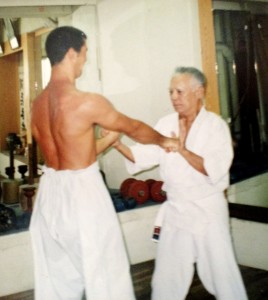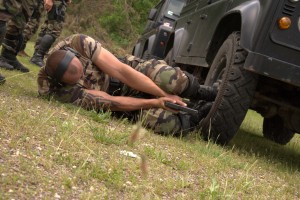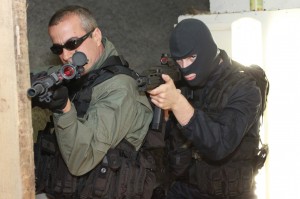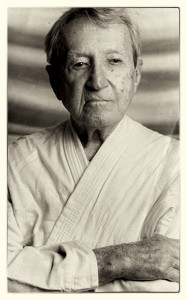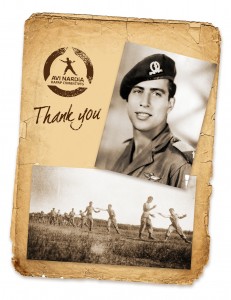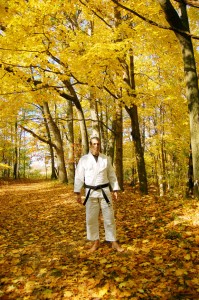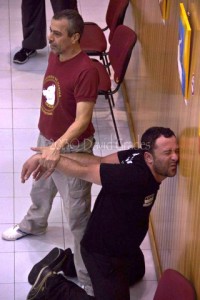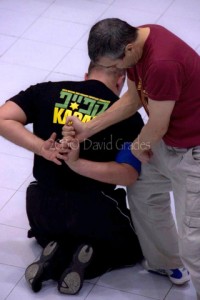Inferiority Martial Arts
Authors: Avi Nardia and Tim Boehlert ©copyright 2014
This is Article #8 co-written with Avi in JUN 2014 – unpublished to date
“Think outside the box” – Hanshi Patrick McCarthy
Skills that were taught to me by Hanshi Patrick McCarthy. The skill I’m most grateful to Sensei for! Respect! I keep reading books and many books not just one book.
There is a saying – “Beware the man of one book.” Homo unius libri, meaning “I fear the man of a single book.”
source: http://en.wikipedia.org/wiki/Homo_unius_libri
Homo unius libri – Wikipedia, the free encyclopedia
en.wikipedia.org
I hear every day in Martial Arts the words ‘this is the BEST martial art.’ My next question is then how many Martial Arts and what kinds of experience in Martial Arts do you have? It’s typically none, meaning they’ve done only this one. Many times it’s good medicine for inferiority people to feel good with themselves as they feel they are doing the best, knowing the best.
I have devoted my life to Martial Arts and hold Black Belts in many different Martial Arts and I continue to explore more and more. Show me that reading just one book is as good as it gets for Self-Defense and understanding self-defense.
To understand the body, the mind, the spirit we need more than one book and method. Our research and exploration leads me to creating the group study of KAPAP and Practical Martial Arts.
When you’re looking into Martial Arts teachers who lead and create Martial Arts and are the most creative you’ll discover that they’ve read more than just the one book from O Sensei Gigoro Kano Oyama but they’ve read books from all of the great teachers in the past. Hanshi Patrick McCarthy knows this is the only way to gain knowledge. He’s most definitely not a one book man that think’s that one book has the answers to all in life.
“Keeping an open mind is the most skill I own.” Hanshi Patrick McCarthy
When we feel inferior we want to hold onto what we have or know, and we’re scared to keep walking as on the way we may see that we’re wrong or that maybe we need to study more.
My advice: Don’t be an Inferiority Martial Artist, but study to be creative. As Albert Einstein said “Creativity is intelligence having Fun.” Have fun in your training, don’t run around in fear.
Understand the difference between Self-Defense and Fighting.
Sometimes fighting comes about as a result of feeling inferior. The inferior may feel that they have something to prove.
In fighting we want to confront the object we try to confront and don’t avoid the fight. We want to fight and it’s our goal to fight.
In Self-Defense we try to avoid the fight doing all that we can to not be confrontational and confrontation is the last thing we want.
When a solider or Police officer tries to confront a subject, his/her goal/agenda IS to confront, to fight and herein lies the problem of not understanding the difference and thinking that fighting is self-defense.
In Self-Defense your goal is to avoid and escape from any and all confrontations and to save fighting as your last option. It doesn’t mean that you’re not ready to, but all of your training and education is not about your ego. It’s not about “Touch me and your first lesson is free.” as many proclaim and then state that it was self-defense. This is purely egotistical, clearly and not self-defense.
There are many mistakes between what is self-defense what is fighting.
Teaching to fight is not teaching self-defense and many times it’s teaching to get into your student into problems with life and ultimately the law as well.
Attitude, education and study are the most important tools to keep you away from becoming an Inferiority Martial Artist. Teaching from a love, peace and fun point of view gets you better results than teaching with fear and using a victim attitude.
Teaching and studying Martial Arts have lead me to try understand the mind and spirit of myself and my surroundings. I remember talking with a Krav Maga student in one of my workshops while taking lunch and he started to talk about himself and said “I was a fat boy and all of the kids bullied me… but look at me now, I do Krav Maga now and if anyone ever touches me, I’d tell them ‘touch me and your first lesson is free.'” It got me to wondering about how extreme his inferiority complex was, and how big his ego. I said to him “have you looked in the mirror lately? You’re still out of shape and trust me you don’t want to fight. Even today your performance in Martial Arts is so bad. Now forget the past, you are over 35 and who would want to bully you at all? Just enjoy life.”
This scenario stayed in my head as I saw more and more students from ‘real street self-defense’ courses and saw how theses courses were lead by bully teachers using ego slogans like ‘touch me and first lesson free.’ It worried me that if someone really touched them it might be their last lesson. They would kill themselves with their self-illusions.
Martial Arts are about love and peace, and being yourself, free of ego, smiling more and enjoying life, as life is Martial Art. If you take only one part of life you don’t get the whole of it, it’s the same as if you took only sport or combatives from the Martial Arts — you didn’t take the whole thing, even though you could see the mountain of Martial Arts.
Over the years I have started to call these Martial Arts ‘Inferiority Martial Arts – I.M.A. They always need to challenge others, to show off, show how strong they are and critique all Martial Arts. “You don’t want to fight on the ground?” Who wants to fight at all? Who wants to fight with or against a knife? For the same reasons that we study blades, we study the ground. Martial Arts, like many things need to be practical. If you have nice chair but can’t sit on it, it’s lost its target audience.
Martial Arts can also be used for self-defense but the term self-defense is so complicated. What is self-defense? Defense first from ourselves. Lots of Martial Arts teachers target vulnerable people with their video-clips and advertise “don’t be a victim.” Once you’ve answered their ad and joined these classes, you have defined yourself as a victim! While talking with a friend, he’d said that Brazilian Ju-Jitsu was his therapy. It relieved his stress and made him feel so great after training, and also benefited him with great conditioning, strong stomach muscles and body, and provided skills useful for self-defense.
An inferiority complex is a lack of self-worth, a doubt and uncertainty, and feelings of not measuring up to society’s standards. It is often subconscious, and is thought to drive afflicted individuals to overcompensate, resulting either in spectacular achievement or extreme asocial behavior. The term was coined to indicate a lack of covert self-esteem. For many, it is developed through a combination of genetic personality characteristics and personal experiences.
Classical Adlerian psychology makes a distinction between primary and secondary inferiority feelings.
· A primary inferiority feeling is said to be rooted in the young child’s original experience of weakness, helplessness and dependency. It can then be intensified by comparisons to siblings, romantic partners, and adults.
· A secondary inferiority feeling relates to an adult’s experience of being unable to reach a subconscious, fictional final goal of subjective security and success to compensate for the inferiority feelings. The perceived distance from that goal would lead to a negative/depressed feeling that could then prompt the recall of the original inferiority feeling; this composite of inferiority feelings could be experienced as overwhelming. The goal invented to relieve the original, primary feeling of inferiority which actually causes the secondary feeling of inferiority is the “catch-22” of this dilemma.] This vicious cycle is common in neurotic lifestyles.
Feeling inferior is often viewed as being inferior to another person, but this is not always the case in the Adlerian view. One often feels incompetent to perform a task, such as a test in school.
source: http://en.wikipedia.org/wiki/Inferiority_complex
So what makes students into Inferiority Martial Artists? Mostly it’s inferiority instructors (they can’t be called teachers) that are overloaded with Ego, that use ego-laden video clips and an egotistical attitude to attract his students and ‘convinces’ them to ‘don’t be a victim’,’Train with me, it’s the navy seal real deal’, ‘I’m the real deal.’ What is ‘the real deal’ at all, as we’re all real aren’t we? These people give themselves grandiose titles and I see guys that have been kicked out of Karate, Arnis, or some Martial Artist programs in Israel. Now they are ‘Grand-Master of Krav Maga!’ It’s a good sale, and he is suddenly more true, more tactical, more Rambo or military, and so on to attract these students. My question: Why does anyone want to dress-up with an Army-style uniform for 2 hours and train in a mid-city mall and then drive back home? If you want to join the REAL Army, the Army is there, as is the Navy Seal program or Real Special Forces programs, unless you can’t get in and it’s your inferiority style.
Many of these will claim Judo is a sport like Aikido and will not work, Karate is old and so on. If you think Aikido doesn’t work, that’s because you’re either looking for a quick fix or too lazy to dedicate your time to train and understand the art. Study Martial Arts and perform Martial Arts. I wonder why the current market is so loaded with people that haven’t even earned their black belts in any style like those in Krav Maga that claim to be Grand Masters!
Remember this:
“It is not titles that honor men, but men that honor titles.”
Niccolo Machiavelli
First be a good human. Keep your integrity. Having the title of being a good father is more important than showing off all of your other titles.
“If you don’t know the difference between what you’re doing and what you should be doing you’re destined to fail.” – Niccolo Machiavelli, “The Prince”
One of my friends complained today about how Integrity is missing in the Martial Arts, and that many teachers SELL certificates. I told him its more interesting how many people will actually BUY those ‘certificates’ as they know there’s no integrity in buying them! The Paradox is easy: with no ‘integrity students’ how can you find ‘integrity teachers?’ When integrity students are rare you will find only a small handful of teachers with integrity. So who need’s to feel the shame more, the Seller or the Buyer?
BUT is it bad? No, as it helps us explain the principle of Dark and Light: To see Light, we need Dark. Wrong is wrong even if no-one is doing it, Right is Right even if no-one is doing it. Even a broken clock gives the right time twice daily. Yes, even some of these guys can show one or two good moves, does that make them Grand Masters?
In my Army officer training my commander said “Now you’re in the officer course, where a normal solider can make 100 mistakes a day, BUT, as an officer you’re allowed only 1 mistake a day. To lead men, you need to make less mistakes, not to get two things right in a day.You need to make less than 100 mistakes in a day, every day.”
This is how we view our KAPAP Leaders – less mistakes!
“You never know how strong you are until being strong is the only choice you have.” Bob Marley
..this is how I feel as a Martial Artist. I don’t see it as showing off how strong I am. I know when the day comes and I will have no other choice — when I have to fight with 6 tumors and life than Martial Arts will be there for me, and I’ll win.
To all ‘Real Self-Defense systems’ to study from: As my father told me before he passed away when I asked him about war he said “we did what we had to do to defend ourselves and our families.” It’s not done for marketing promotion or posting on FaceBook. When you must defend you will find how much you know from playing with life and living right with love and peace.
“Love everybody, but never sell your sword.” Paulo Coelho
Here is one more principle: trust all and trust none, only trust yourself. But if you don’t trust yourself, for sure all will not be there for you as you need. It happened to me, and since I trust myself I recovered from being sick with tumors. Lots of ‘Friends’ failed me or more-so themselves. Do I need them?
“Friendship is the hardest thing in the world to explain. It’s not something you learn in school. And if you haven’t learned the meaning of friendship, you really haven’t learned anything.” Muhammad Ali
Grab a plate and throw it on the ground, does it break? Now say you’re sorry, did it go back to the way it was before?
But I study a great lesson: Storms make trees take deeper roots. All these lessons make me stronger!
Sometimes it’s not the people who change, it’s the mask that falls away.
In Japanese we say Honne and Tatemae. Honne and Tatemae are Japanese words that describe the contrast between a person’s true feelings and desires ( honne?) and the behavior and opinions one displays in public ( tatemae?, lit. “façade”).
Honne may be contrary to what is expected by society or what is required according to one’s position and circumstances, and they are often kept hidden, except with one’s closest friends. Tatemae is what is expected by society and required according to one’s position and circumstances, and these may or may not match one’s honne.
The honne–tatemae divide is considered to be of paramount importance in Japanese culture.
Cat in a Tree: Only One Way or Many Ways?
[a Wingate University teaching story]
I was demonstrating a series of techniques when I was interrupted by another instructor who criticized Avi’s teaching, saying it was wrong to give students choices. In order to function under stress he asserted, students should only be given one simple response. In this way they would be able to act instantly without thinking. To illustrate his point he began to tell a parable about a cat. I will have to paraphrase the story but the gist of it goes something like this. One day a cat was walking with a buffalo when they came across a crocodile. The buffalo tried to gore the crocodile but was killed and eaten whilst the cat simply ran up a tree and escaped. The next day the cat was walking with an elephant when they encountered a hunter. The elephant attempted to swat the hunter with his trunk but was shot and killed whilst the cat ran up a tree and escaped. The story went on and on with the cat befriending a diverse range of unlucky animals. Unfortunately they were all killed in tragic circumstances whilst the hero of the tale simply ran up a tree and escaped. Avi patiently listened whilst the other instructor finished his story and then having skillfully made his point the man looked smugly around the room. Nodding his head sagely Avi paused for effect and asked if he could just ask one question: “what if there is no tree?”!
The fact is that although I know where the other instructor was coming from he had demonstrated the old adage ‘a little bit of knowledge is dangerous.’ When initially teaching students to survive under stress, it is important that in the early stages students should be provided with a small range of options which deal with the most likely situations using classical or operant conditioning methods (‘stimulus – response’.) This will help students to quickly acquire the requisite key skills, build confidence, avoid ‘mind freeze’ and enable them to respond at the more unconscious level. This type of training will prepare students to act and react. Once those responses are mastered, students will then be taught the ‘what-if’ and the more advanced techniques as this is the element of training which will ultimately allow the student to adapt under pressure.
The Japanese say that it’s better to start to study 15 years later with the right teacher than to start with the wrong teacher. In the current market of Martial Arts where the sale of achievement/rank certificates, where many instructors earn 7 levels in 3 days, you should ask about the roots of your teachers. Most teachers talk about other teachers, but I always explain to my students about my roots as a Martial Artist, as this is what we teach. “I don’t teach you to be soldiers.” I help them trace my roots, introduce them to my teachers in Karate, Aiki Kenpo Jujutsu, BJJ, Kendo and so on. I earned it all, I didn’t buy it!
“When you have money in your hand, only you forget who you are, but when you do not have any money in your hand, the whole world forgets who you are.” Bill Gates
This is not a saying for a Martial Arts teacher. A Martial Arts teacher is not there for money, we are here for students, for any need, to help support, and for direction. Yes we need to earn our incomes, but we don’t live by the dollar, we live by integrity.
To close-out this column, and with everyone now thinking, The last thing in Martial Arts is the self-defense “Fight”, sharpening your moves is more important than hitting the tree – make-ready your axe first!
“Give me six hours to chop down a tree and I will spend the first four sharpening the axe.” Abraham Lincoln
It’s the same in Martial Arts: Be a good Martial Artist and carry a sharp axe. Train yourself in mobility and stamina and all, then you will be ready when there’s a need to cut down a tree, and it’ll be easier, but if you try to cut the tree with no preparation, it may not work.
Maj. Avi Nardia www.avinardia.com
Tim Boehlert www.defendublog.com
© Copyright, 2014 Maj. Avi Nardia & Tim Boehlert

